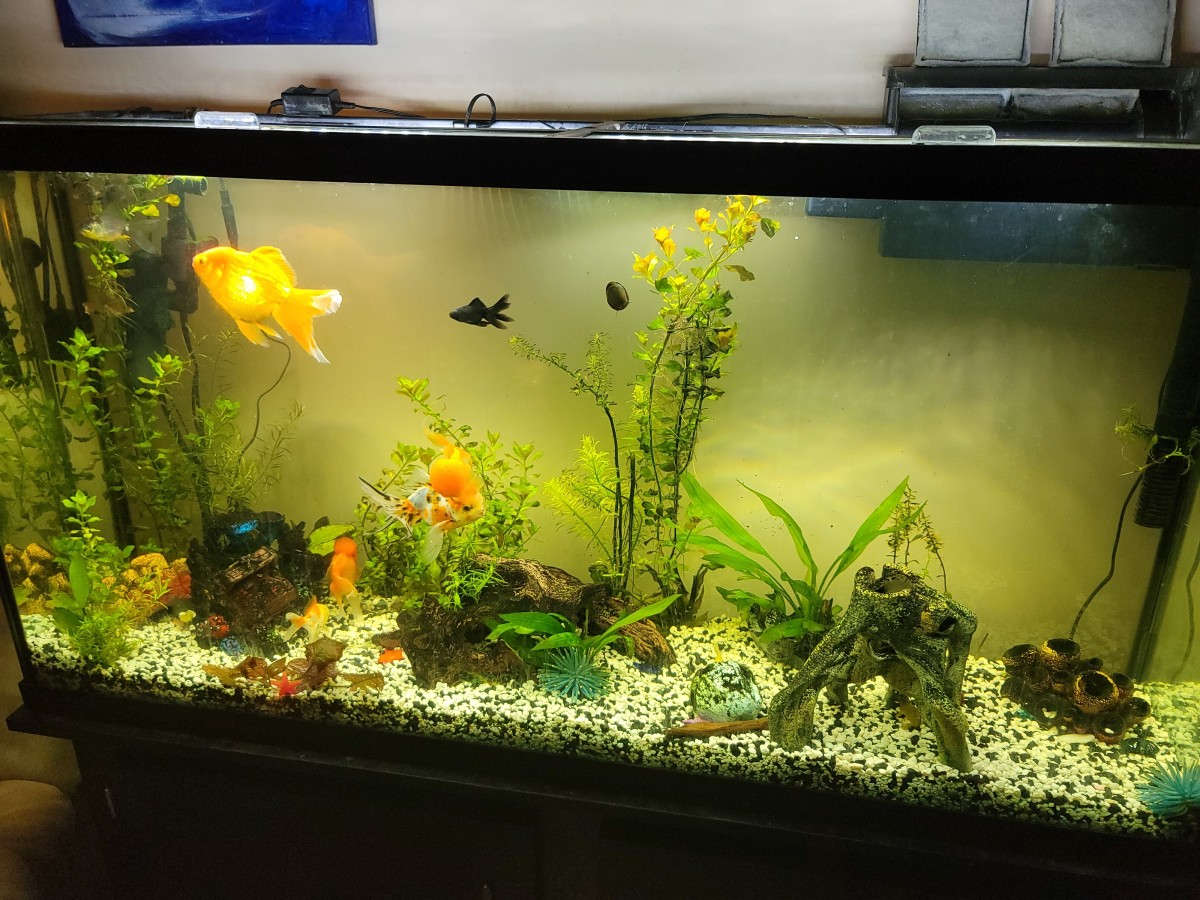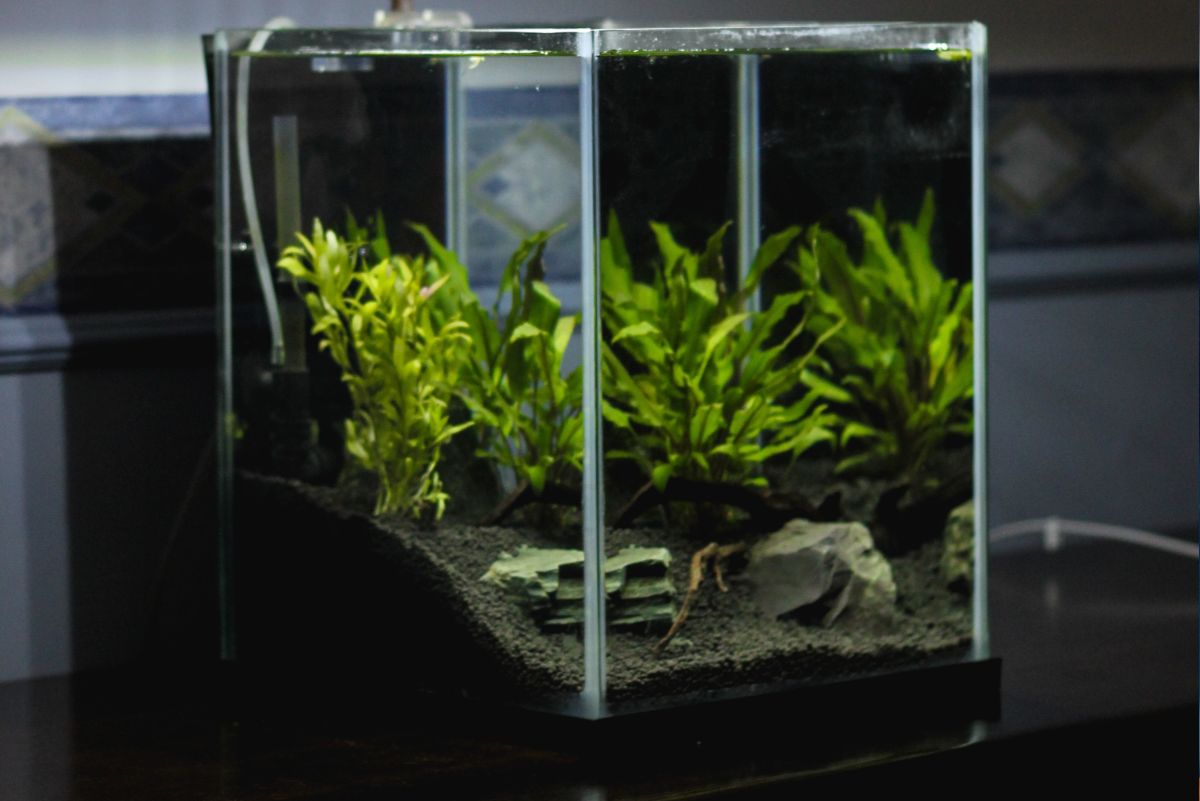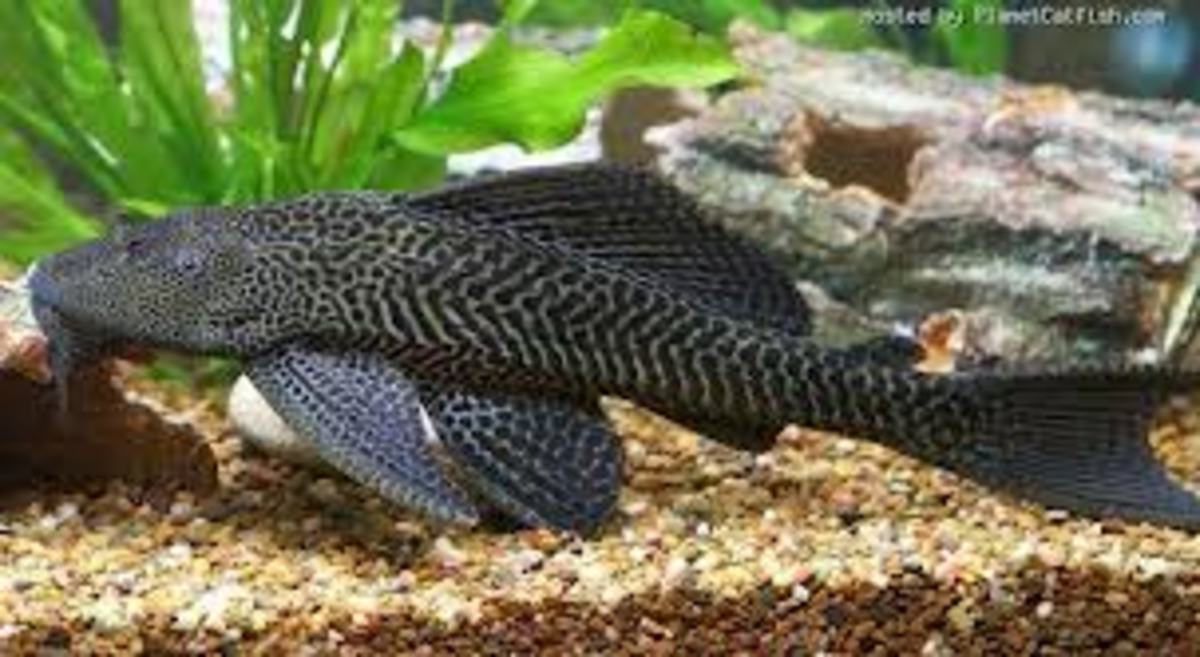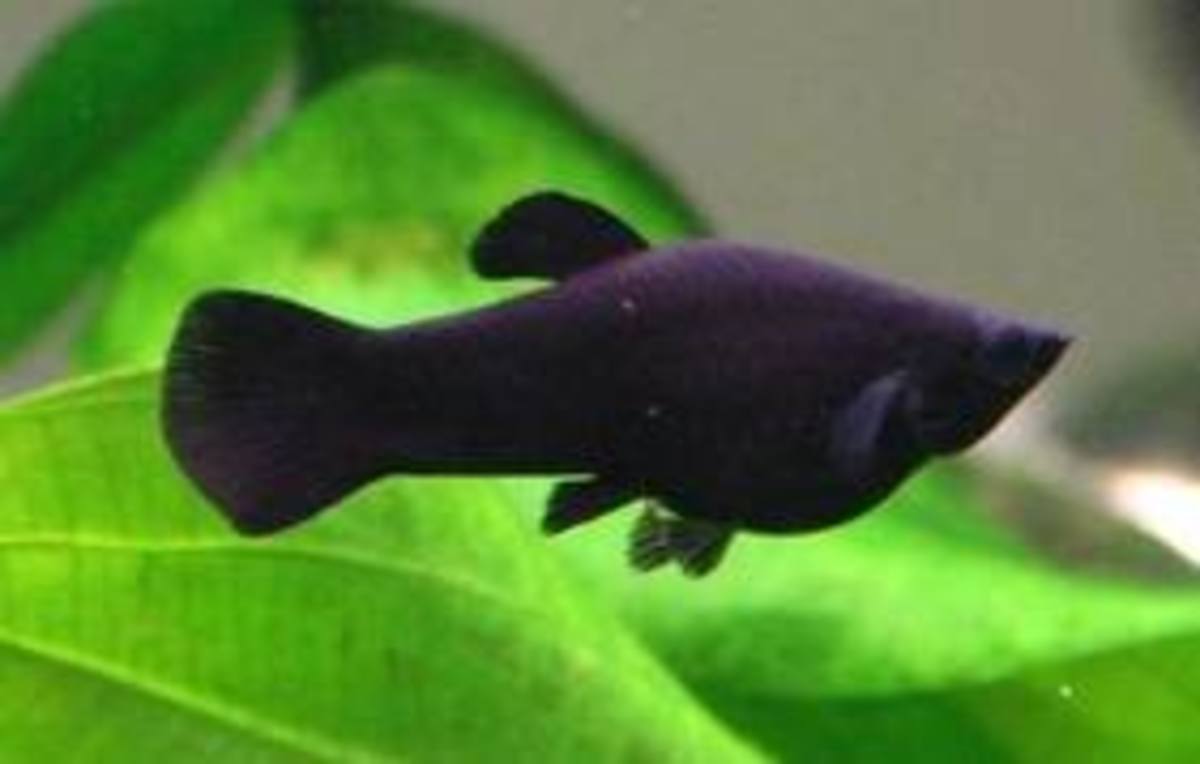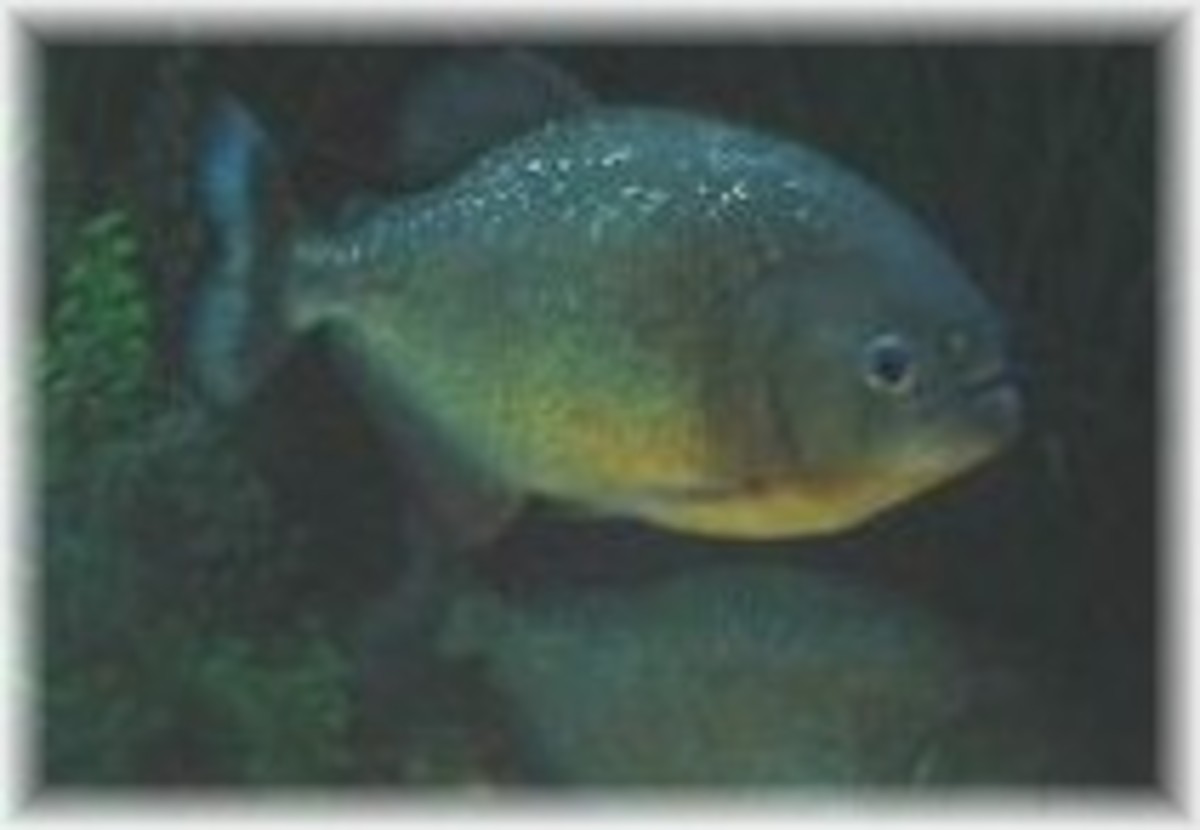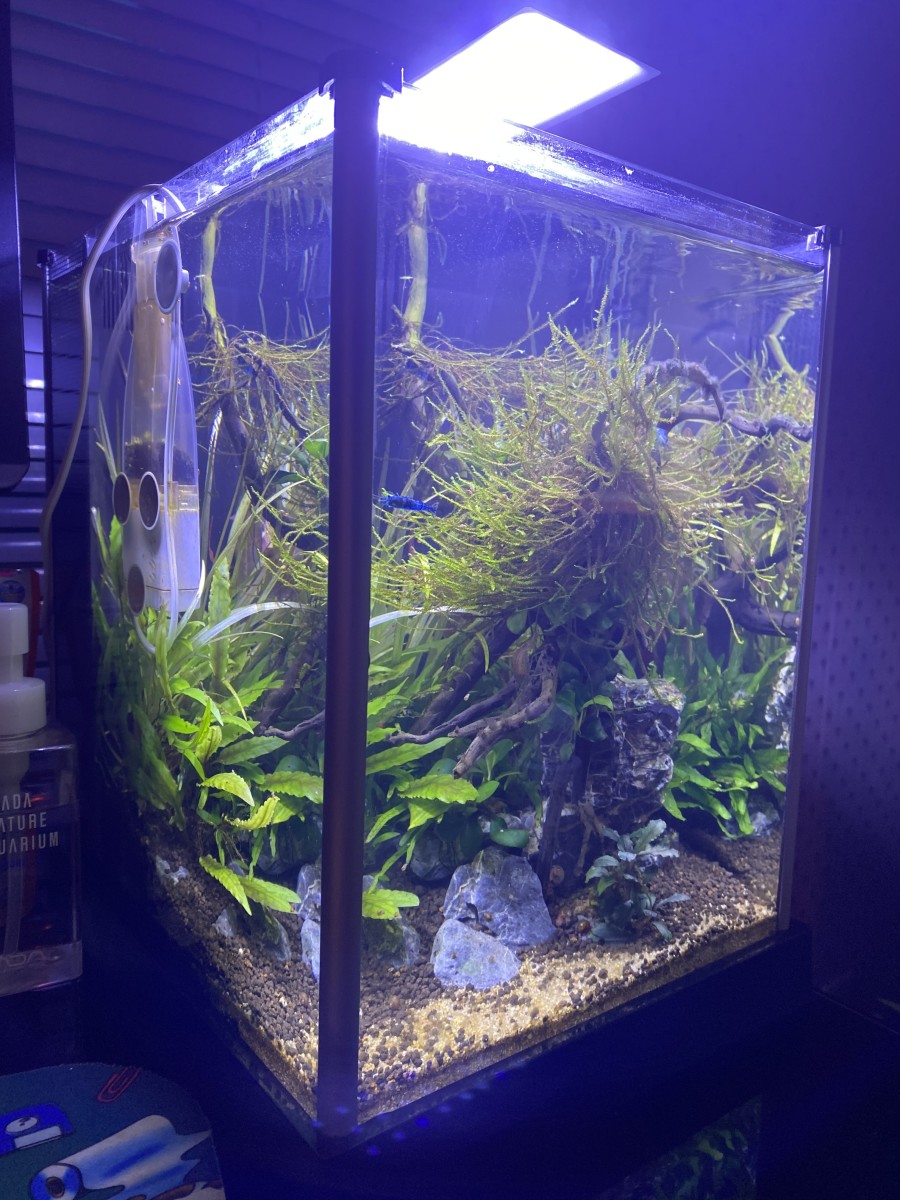- HubPages»
- Pets and Animals»
- Tropical Fish & Aquariums»
- Aquariums & Fishbowls
Maintaining a healthy aquarium
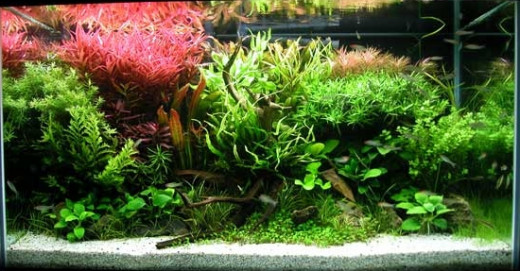
Many fish keepers find keeping fish alive to be one of their biggest challenges. They end up asking questions like "Which fish are hard to kill?" While there are fish species that are challenging to maintain in aquaria, it generally is less of a question of keeping your fish healthy than it is one of keeping the ecosystem healthy. If you can keep that miniature ecosystem healthy, keeping fish alive becomes much easier.
Step one: quarantine
Most people treat quarantine like flossing - it's something that you know you should do, but it just seems like too much trouble. However, it's an essential first step to maintaining a healthy tank ecosystem.
Many of the pathogens that affect fish are opportunistic - they are always present in a tank, but healthy fish are able to fight them off. Only when they fish is already stressed by something else (like poor water quality) do they become susceptible to these pathogens. Fin rot, which is common in a newly established tank, is caused by ubiquitous microorganisms (bacteria or fungi). Some of the most serious pathogens are not present in all tanks, and can be avoided with proper quarantine. Most of these are external or internal parasites. If you quarantine new fish before introducing them to your tank, you can avoid many of these problems. Quarantine is not foolproof - Camallanus worms can take over 100 days to show up. But quarantine is still a useful first step in maintaining a healthy aquatic ecosystem.
Ecosystem concepts
If you understand your aquarium as an ecosystem, then the challenges of keeping it healthy are easier to understand. In an ecosystem, some things come from outside, while others cycle within the system.
Energy always comes from outside - live of earth depends entirely on energy that comes from outside the system in the form of energy from the sun. Matter, on the other hand, tends to cycle. There will be inputs and losses of matter, but there will also be cycling. Depending on how "open" or "closed" a system is, the cycling of material may be dominated by external inputs and losses, or it may be dominated by processes that go on locally. In an aquarium, external inputs and losses tend to dominate the cycling of matter. In practical terms, this means that you need to ensure that the elements that you add to the system when you feed your fish are balanced by the elements that you remove when you do water changes.
While it's important to understand these things in terms of inputs and losses, it's even more important to understand the transformations that go on in your aquarium. If you read the label on your container of fish food, you know what you're adding to the tank. But things don't stay in the form you add them - proteins in the fish food become ammonium compounds after passing through the fish. These then undergo further transformations in the system as they are used by one bacterial species after another. Different forms of the same compound are going to affect your fish in different ways. Understanding this is an important step in keeping your aquarium healthy, and keeping your fish alive.
Biogeochemical cycle in a freshwater aquarium
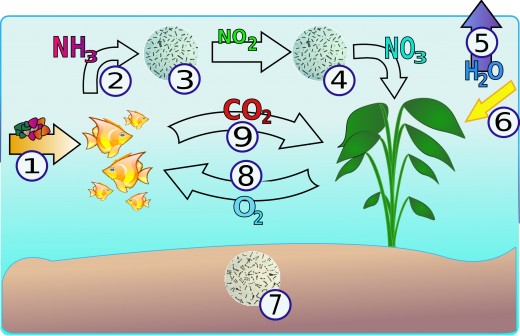
1. Nutrients are added in the form of fish food, which is eaten by fish (and other organisms). 2. Fish release excess nitrogen in the form of ammonia and urea. 3. Nitrosomas bacteria convert ammonia to nitrites. 4. Nitrobacter, Nitrospira, or other bacteria oxidise nitrites to nitrates.
5. Water is lost through evaporation. 6. Energy enters the system as light and is captured by plants carrying out photosynthesis. 7. Bacteria in the substrate break down dead organic matter, consuming oxygen while doing so. 8. Plants release oxygen during photosynthesis, which is used by the fish for respiration. 9. Fish produce carbon dioxide through respiration, which is consumed by plants during photosynthesis.
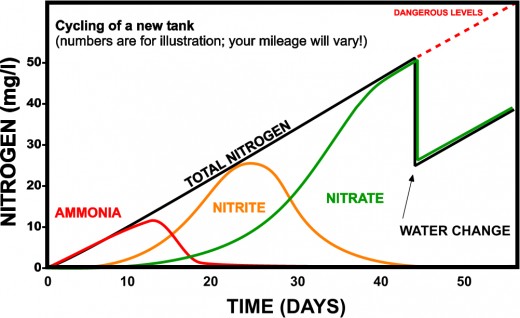
Nitrogen cycling
Almost every aquarist has heard the term "cycling" in relation to the setup of a new aquarium. When you first set up a new tank, levels of ammonia increase, and then fall off. As ammonia levels fall off, the levels of nitrites rise. Finally, nitrite levels rise, and nitrate levels climb. These changes are very significant for the survival of fish in your tank - while ammonia and nitrites are toxic to fish, nitrates are only harmful at high concentrations. All of these reflect the same element - nitrogen - which you add to your tank when you feed your fish.
Fish food contains nitrogen, primarily in the form of proteins. Fish consume this food and excrete out the excess nitrogen as ammonia. Certain species of bacteria use the ammonia as a food source and convert it to nitrites. Other bacteria oxidise these nitrites to nitrates. While there are bacteria that can convert nitrates back to nitrogen gas, and while plants and bacteria will take up nitrogen compounds and use them to make proteins, none of these processes occur quickly enough to balance out all the nitrogen that gets added when you feed your fish. Thus, to manage nitrate levels, you need to perform water changes.
In a new tank, bacterial populations are low. The bacteria that oxidise ammonia are going to be food limited - if there isn't any food for them, them won't grow. Over the first few weeks of the life of an aquarium, ammonia levels tend to spike because more ammonia is being released than can be consumed by the bacteria. As the bacterial populations grow, they are able to consume all the available ammonia. In a mature tank, the level of ammonia should be undetectable. A spike in ammonia in a mature tank means that either the input of nitrogen has increased sharply, or the bacterial population has crashed. The latter can likely to occur with certain medications. The former can occur if you add a large number of fish to an established aquarium, or if there's a large dead fish somewhere that you haven't noticed. Spikes in ammonia can lead to further fish deaths, or to general unhealthiness in your tank.
Energy
In your aquarium, some energy is captured locally through photosynthesis. Your plants will photosynthesise. The energy the capture from sunlight (or more commonly, the fluorescent bulbs in the hood of your tank) will be used to combine carbon dioxide and water to make sugars. Oxygen, which is a waste product of photosynthesis, is released into the waters of your aquarium. Plants use the sugars they make as the building blocks for everything else - they can make cellulose, proteins, DNA - all biological molecules are made from the basic building blocks of sugars. Even if you don't have plants in your tank, once you have light getting into the tank, you will still have algae or cyanobacteria photosynthesising.
In nature, there may be enough photosynthesis going on in a body of water to provide enough energy to keep everything else alive, but very often there's input from external sources. In a forest stream, this might be dead leaves falling off trees. In an aquarium, it tends to be "fish food". The energy present in your tank determines everything else that goes on. Your fish depend on the food you feed them for their energy supply. Plants and algae in your tank can contribute some more energy.
The total energy input sets one limit on the amount of life you can support in your tank, but its unlikely to be the limiting factor. You can't add fish indefinitely and expect them to survive simply by giving them more food. At some point there won't be enough oxygen in your tank. Waste products will build up. Crowded fish will be aggressive to one-another. While essential, it's unlikely to be limiting (unless you don't feed your fish at all...)
"Old tank syndrome"
Most aquarists are familiar with what is called "new tank syndrome", the problem of fish dying when added to a new aquarium that hasn't gone through the cycling process. Less well known is what is called "old tank syndrome". Sometimes aquarists will have an older tank full of healthy fish in which newly added fish always die. This seems puzzling - if the older fish are healthy, why do the new fish die?
Over time, most people relax their maintenance schedules over time. The fish can adapt to the changing water chemistry as long as it is gradual, but the shock is too much for newly added fish. The best solution to this is to check your water chemistry and gradually increase your maintenance routine.


